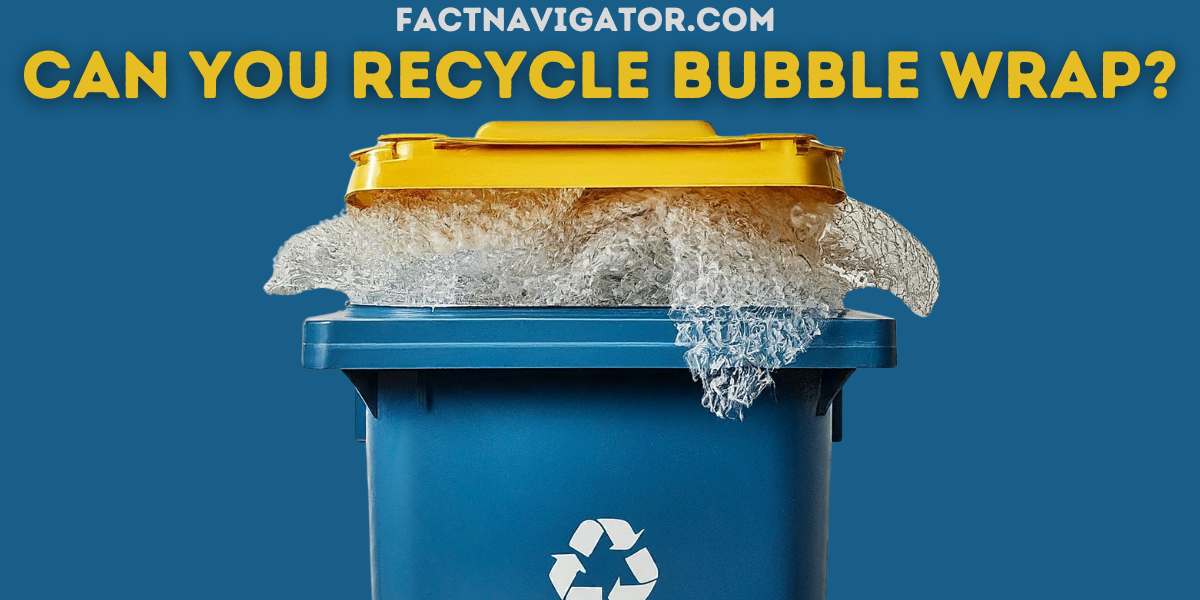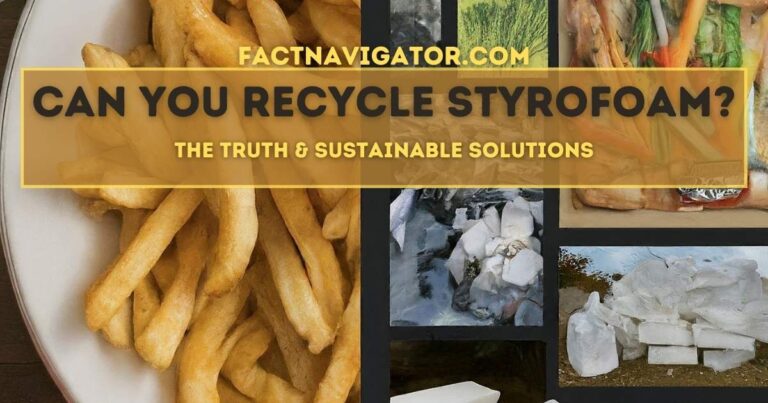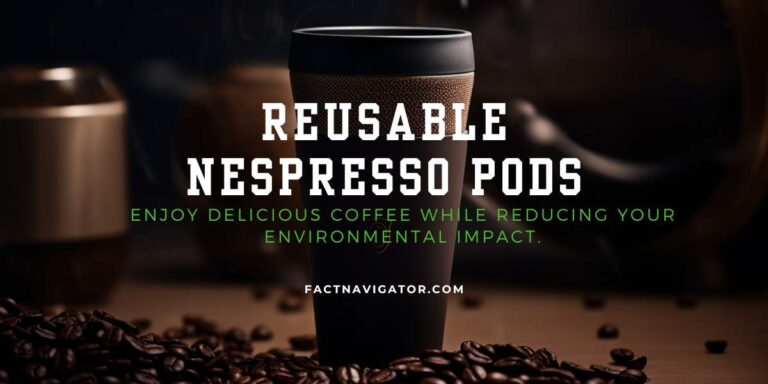Can You Recycle Bubble Wrap? The Ultimate Guide

1. Understanding Bubble Wrap Material
1.1 What is bubble wrap made of? (LDPE plastic)
Bubble wrap, despite its seemingly complex structure, is actually composed of a relatively simple material: low-density polyethylene (LDPE). LDPE is a type of thermoplastic, meaning it can be melted, molded, and reshaped multiple times without losing its integrity. This characteristic makes it ideal for various applications, including packaging films, plastic bags, and, of course, bubble wrap.
Here’s a closer look at the composition of bubble wrap:
- Polyethylene Film: The base layer of bubble wrap is a thin sheet of LDPE film. This film provides a flexible and waterproof barrier, protecting the enclosed item from dust, moisture, and minor scratches.
- Air Pockets: The signature bubbles of bubble wrap are created by heating and stretching the LDPE film over a patterned mold. This process traps air pockets within the film, forming the characteristic dome-shaped bubbles.
The size and density of these air pockets determine the level of cushioning provided by the bubble wrap. Larger and denser bubbles offer greater protection for heavier or more fragile items.
1.2 Why is knowing the material important for recycling?
Understanding that bubble wrap is made of LDPE is crucial for determining its recyclability. Different types of plastics have varying recycling capabilities, and knowing the specific plastic used is essential for proper waste management.
Here’s why understanding the material is important:
- Identification for Recycling Programs: Most recycling programs accept specific types of plastic based on their resin identification code (RIC). Knowing that bubble wrap is made of LDPE, which typically carries the RIC code 4, allows you to identify compatible recycling programs in your area.
- Contamination Prevention: Mixing incompatible plastics in recycling streams can contaminate the entire batch, rendering it unusable. By recognizing bubble wrap as LDPE, you can avoid accidentally contaminating other recyclable materials and ensure efficient recycling processes.
- Choosing Sustainable Alternatives: When faced with packaging options, knowing the material composition empowers you to make informed choices. If alternatives made from recycled or more readily recyclable materials are available, you can opt for those, contributing to a more sustainable waste management cycle.
Therefore, understanding the material makeup of bubble wrap goes beyond mere curiosity. It empowers you to actively participate in responsible waste management practices and contribute to a more sustainable future.
2. The Truth About Bubble Wrap Recycling
2.1 Can you recycle bubble wrap in your curbside bin? (No, and why not)
While the desire to recycle everything commendable, bubble wrap generally cannot be placed in your curbside bin. This might come as a surprise, considering its plastic composition. However, there are crucial factors to understand:
- Material Classification: As discussed earlier, bubble wrap is made of LDPE, categorized under RIC code 4. Most curbside recycling programs primarily accept plastics with RIC codes 1 and 2, typically representing rigid containers like bottles and jugs.
- Processing Challenges: LDPE film, unlike rigid plastics, poses challenges in sorting and processing facilities. Its lightweight and flexible nature can easily tangle in machinery, causing jams and disruptions. This not only hinders efficient recycling but also poses safety risks for workers.
- Contamination Concerns: Even if it manages to pass through the initial sorting, bubble wrap can contaminate other recyclables due to its different melting point and processing requirements. This contamination renders the entire batch unusable, negating the efforts of responsible recycling.
Therefore, putting bubble wrap in your curbside bin is not recommended. It can disrupt the recycling process, lead to contamination, and ultimately end up in landfills despite being potentially recyclable.
2.2 Is bubble wrap truly recyclable? (Yes, but with specific instructions)
Despite the limitations of curbside recycling, the good news is that bubble wrap is indeed recyclable. However, it requires specific steps and alternative drop-off points:
- Designated Recycling Locations: Instead of your curbside bin, look for dedicated drop-off centers that accept plastic films like bubble wrap. These locations might be found at grocery stores, recycling facilities, or community centers. You can usually find information about these locations on your local waste management authority’s website or app.
- Preparation is Key: Before heading to the drop-off point, ensure your bubble wrap is clean and free of any debris or tape. Additionally, deflate the air bubbles by gently pressing them to minimize volume. This helps with storage and transportation at the recycling facility.
By following these guidelines, you can ensure that your bubble wrap reaches the appropriate recycling stream and gets processed into new products, minimizing its environmental impact.
Remember, even though bubble wrap can be recycled, it’s crucial to prioritize reuse whenever possible. Repurposing bubble wrap for multiple packing needs or opting for eco-friendly alternatives whenever feasible are even more sustainable practices.
Also Read: Can You Recycle Styrofoam? The Truth & Sustainable Solutions
3. How to Properly Recycle Bubble Wrap
While bubble wrap can’t go in your curbside bin, responsible recycling options are still available. Here’s a comprehensive guide on how to properly recycle bubble wrap and minimize its environmental impact:
3.1 Identifying designated recycling points (grocery stores, drop-off centers)
Finding the right place to recycle your bubble wrap is crucial. Here are some key strategies:
- Local Recycling Programs: Check your local waste management authority’s website or app for a list of designated drop-off centers that accept plastic film recycling. These centers might be located at:
- Recycling facilities: Many larger communities have dedicated recycling facilities that accept various materials, including plastic films.
- Community centers: Some community centers partner with recycling programs to offer drop-off points for residents.
- Retail stores: An increasing number of grocery stores and larger retailers are incorporating plastic film recycling bins within their stores, often located near the exit or customer service areas.
- Online Resources: Utilize online resources like Earth911’s Recycling Center Search or RecycleNation’s Recycling Directory to search for drop-off locations by entering your zip code. These platforms provide comprehensive information on accepted materials and specific instructions for each facility.
- Call your local waste management authority: If you’re unsure about designated drop-off points in your area, don’t hesitate to contact your local waste management authority directly. They can provide accurate and up-to-date information on available recycling options.
Remember: Not all drop-off centers accept the same materials. Always check the specific guidelines and accepted items before heading to a location.
3.2 Preparing your bubble wrap for recycling (cleaning, deflation)
Once you’ve identified a suitable drop-off point, prepare your bubble wrap for recycling to ensure efficient processing:
- Cleaning: Remove any adhesive tape, labels, or debris from the bubble wrap. Food residue or other contaminants can hinder the recycling process. Use a damp cloth or mild detergent to wipe down the surface if necessary.
- Deflation: Gently press out the air from the bubbles to minimize the volume of the bubble wrap. This makes it easier to store, transport, and sort at the recycling facility. You can use your fingers, a rolling pin, or a flat surface to apply gentle pressure.
Avoid:
- Tying or bundling the bubble wrap: This can create tangles that disrupt sorting machinery.
- Ripping or shredding the bubble wrap: Smaller pieces can fall through sorting screens and contaminate other recyclables.
3.3 Additional tips for responsible bubble wrap recycling
Here are some additional tips to ensure responsible and effective bubble wrap recycling:
- Check for recycling symbols: Look for the recycling symbol and the RIC code 4 on the bubble wrap packaging. This confirms its recyclability and helps identify compatible recycling programs.
- Consider reuse before recycling: Whenever possible, prioritize reusing your bubble wrap for multiple packing needs. This reduces the overall demand for new materials and minimizes the environmental impact.
- Explore eco-friendly alternatives: When packing, consider sustainable alternatives like biodegradable packing peanuts, recycled paper cushioning, or inflatable air pillows made from recycled materials.
- Spread awareness: Educate others about proper bubble wrap recycling practices. Share information with friends, family, and colleagues to encourage responsible waste management habits.
By following these steps and adopting mindful practices, you can contribute significantly to a more sustainable future for our planet. Remember, responsible waste management is a collective effort, and every individual action plays a crucial role.
4. Alternatives to Recycling Bubble Wrap
While responsible recycling is crucial, prioritizing reuse is even more sustainable when it comes to bubble wrap. Here are effective alternatives to consider:
4.1 Reusing bubble wrap for multiple packing needs
Bubble wrap’s air-cushioning properties make it a versatile packing material. Before discarding it, explore ways to reuse it for multiple packing needs:
- Repacking fragile items: If you receive items packed in bubble wrap, save it for future use when sending fragile items yourself.
- Storing delicate items: Wrap seasonal decorations, electronics, or other delicate items in bubble wrap for safe storage during off-seasons or between uses.
- Protecting furniture during moves: Utilize bubble wrap to cushion furniture corners and delicate surfaces during relocation.
- Creative applications: Get creative! Bubble wrap can be used for crafting projects, soundproofing small spaces, or even insulating windows during colder months.
By reusing bubble wrap, you extend its lifespan, reduce the demand for new materials, and minimize your overall environmental footprint.
4.2 Exploring eco-friendly packing materials
If bubble wrap reuse isn’t feasible, consider opting for eco-friendly alternatives for your packing needs:
- Compostable packing peanuts: Made from plant-based materials like corn starch or wheat, these peanuts offer cushioning and biodegrade readily, leaving no harmful residue behind.
- Recycled paper cushioning: Shredded recycled paper or crinkled paper can provide effective cushioning for lighter items while being fully recyclable or compostable.
- Inflatable air pillows: These pillows are made from recycled plastic or biodegradable materials and can be inflated on demand, offering customizable cushioning and minimizing storage space when deflated.
- Reusable packaging: Invest in reusable packing materials like cloth pouches, padded envelopes, or rigid containers. These options can be used repeatedly, eliminating the need for disposable packaging altogether.
Choosing eco-friendly alternatives not only reduces waste but also supports sustainable practices within the packaging industry.
Remember: When selecting alternatives, consider the specific needs of your items and choose materials that offer adequate protection while minimizing environmental impact.
By prioritizing reuse, exploring eco-friendly options, and making informed choices, you can significantly contribute to a more sustainable future and minimize your reliance on traditional, less-environmentally friendly packaging materials.
5. The Environmental Impact of Bubble Wrap
Bubble wrap, despite its undeniable usefulness, carries a significant environmental footprint if not managed responsibly. Understanding the consequences of improper disposal and the benefits of responsible recycling is crucial for making informed choices.
5.1 Consequences of improper bubble wrap disposal (landfills, pollution)
Landfill Domination: When bubble wrap ends up in landfills, it contributes significantly to the ever-growing waste problem. LDPE, the plastic used in bubble wrap, is not biodegradable and can persist in landfills for hundreds of years, occupying valuable space and hindering natural decomposition processes.
Microplastic Pollution: Over time, landfills are susceptible to weathering and erosion, causing plastic debris to break down into smaller fragments known as microplastics. These microplastics can contaminate soil and water bodies, harm wildlife through ingestion, and even enter the human food chain, posing potential health risks.
Greenhouse Gas Emissions: The production of LDPE plastic used in bubble wrap involves the extraction of fossil fuels and energy-intensive manufacturing processes, contributing to greenhouse gas emissions that accelerate climate change. Additionally, improper disposal in landfills can lead to methane emissions, further exacerbating the problem.
These consequences highlight the importance of responsible bubble wrap management to minimize its negative impact on our environment.
5.2 Benefits of responsible bubble wrap recycling (resource conservation, reduced waste)
By prioritizing responsible recycling, we can unlock several environmental benefits:
Resource Conservation: Recycling bubble wrap allows us to reprocess the LDPE plastic into new products, reducing the need for virgin plastic production. This conserves valuable natural resources like oil and gas, which are finite and essential for various other applications.
Reduced Landfill Waste: When recycled effectively, bubble wrap is diverted from landfills, minimizing its contribution to growing waste problems. This not only frees up landfill space but also reduces the associated environmental burdens like potential soil and water contamination.
Lowered Carbon Footprint: Recycling processes generally require less energy compared to virgin plastic production. This translates to reduced greenhouse gas emissions, mitigating the environmental impact associated with bubble wrap throughout its lifecycle.
Sustainable Practices: Choosing to recycle bubble wrap demonstrates a commitment to sustainable waste management practices. This encourages responsible consumption habits and paves the way for a more circular economy, where resources are efficiently utilized and waste is minimized.
By understanding the environmental implications of both improper disposal and responsible recycling, we can make informed choices and contribute to a more sustainable future. Remember, every individual action, including responsible bubble wrap management, plays a crucial role in protecting our planet.
6. Conclusion: Making Informed Choices
Bubble wrap, while undeniably convenient, presents a challenge in the realm of responsible waste management. Understanding its material composition, navigating proper recycling procedures, and exploring eco-friendly alternatives are crucial steps towards minimizing its environmental impact.
Responsible waste management extends far beyond just bubble wrap. It encompasses a mindful approach to all our consumption habits, from choosing products with minimal packaging to disposing of waste in designated and responsible ways. By adopting sustainable practices in our daily lives, we can collectively contribute to a healthier planet for ourselves and future generations.
Here are some actionable steps you can take to promote responsible waste management:
- Prioritize reuse: Whenever possible, repurpose bubble wrap for multiple packing needs or explore creative applications before considering disposal.
- Embrace eco-friendly alternatives: When packing is necessary, opt for sustainable options like compostable materials, recycled paper cushioning, or reusable containers.
- Recycle responsibly: Identify designated drop-off points for bubble wrap recycling in your area and ensure proper preparation before collection.
- Spread awareness: Educate others about responsible bubble wrap management and encourage them to adopt sustainable practices in their own lives.
Remember, even small changes in individual behavior can collectively create a significant positive impact.
Don’t stop at individual action! Here’s how you can further contribute to a more sustainable future:
- Share your knowledge: Talk to friends, family, and colleagues about responsible bubble wrap recycling and encourage them to adopt similar practices.
- Advocate for change: Reach out to local businesses and retailers, urging them to adopt eco-friendly packaging solutions and minimize their reliance on non-recyclable materials.
- Support sustainable brands: Choose products from companies committed to sustainable packaging practices, sending a strong message to the market about consumer preferences.
By taking these steps, you can become an active advocate for responsible waste management and contribute to a future where sustainability is prioritized at every level. Remember, collective action holds immense power to create positive change and ensure a healthier planet for all.





